
Separated from mainland North Carolina by a series of sounds, the outer banks are a string of islands and peninsulas that practically constitute most of the US southeastern coastline. This narrow strip of land is dotted with golden beaches, resort towns and as it turns out, also several pockets of sheer wilderness. Nestled less than a half a mile from where the Wright Brothers allegedly conducted the first flight, Run Hill State Nature Preserve is a forgotten enclave of dunes that provides a glimpse to how the region originally looked like.
Since Run Hill is not categorized as a state park, but rather as a state natural area, it has no visitor center, no official entrance and also, no public parking. Nevertheless, if you do come here by car you’ll most probably find plenty of parking space right next to Casey R. Logan Disc golf.
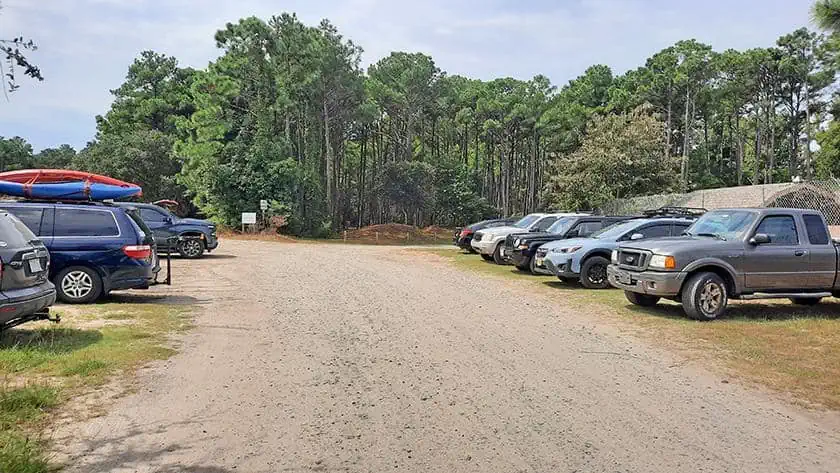
photography by: Omri Westmark
Similarly, the lack of any main entrance means that visitors must be resourceful and intuitively find an entry point by themselves. Luckily, there is no shortage of such, in fact, both the 10th Ave in Kill Devil Hills and a wooded path along the disc golf club provide an access to the nature reserve.
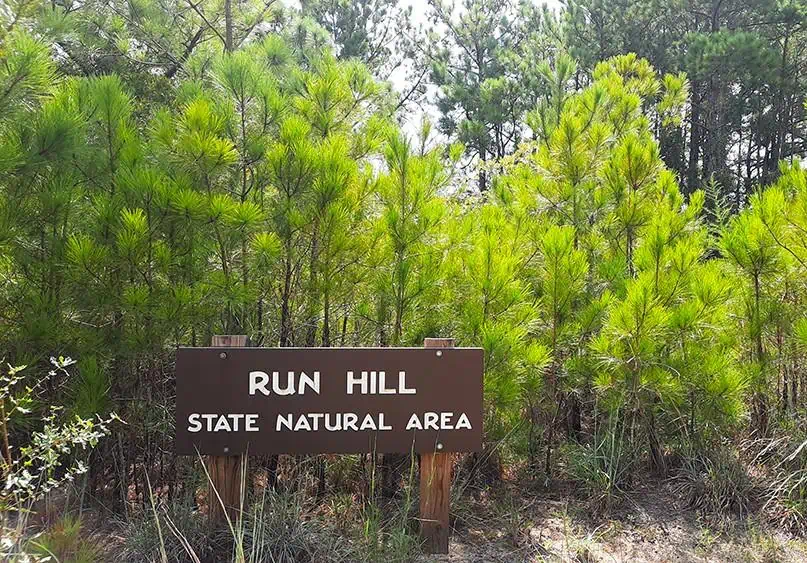
photography by: Omri Westmark
Run Hill State Nature Preserve or State Natural Area is part of a series of dune clusters along the barrier islands of the outer banks, with the close-by 420 acre Jockey’s Ridge State Park being the largest of which. Unlike its larger counterpart which greets more than 2 million visitors annually, Run Hill is incredibly empty of human presence, so much so, that most of the time you’ll probably be the only person roaming around its premises.
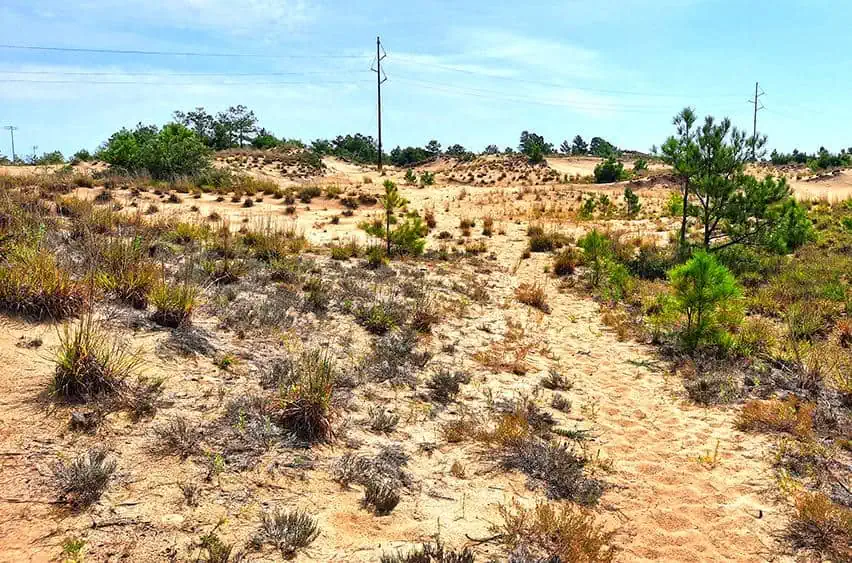
photography by: Omri Westmark
Back when human settlement in the Outer Banks was in its infancy, the entire area was covered by sand dunes that were sculpted by the wind across centuries. Run Hill, as well as Jockey’s Ridge, are simply a vestige of the region’s wild past. While Jockey’s Ridge dodged destruction thanks to a local protest, Run Hill’s fate was spared after a land developer who owned the area went bankrupt moments before the dunes were bulldozed. In the years that followed, Dare County and the state of North Carolina exchanged lands, and so, the sandy enclave became the property of North Carolina and the Nature Conservancy, ultimately declared as a state nature reserve in 1995.
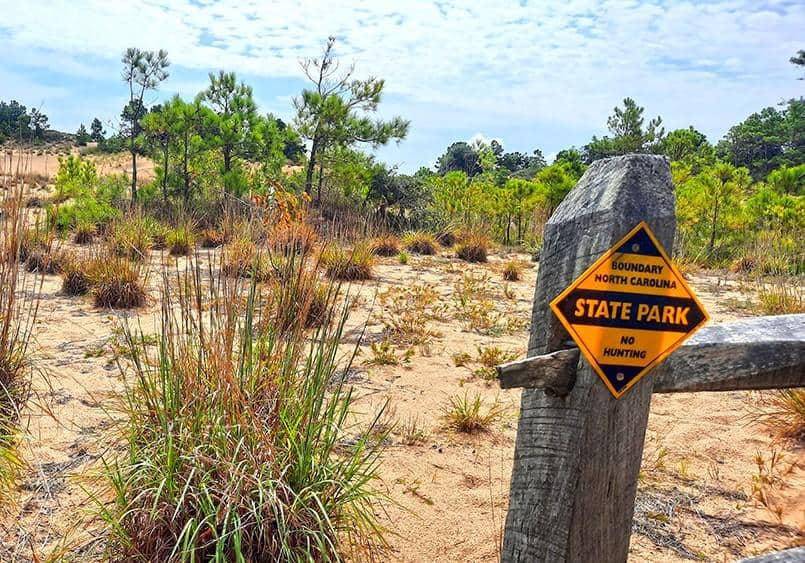
photography by: Omri Westmark
Its lack of visitors by no means implies a lack of things to see, in fact, quite the opposite, as the absence of humans is translated to an unspoiled nature that is left alone to thrive.

photography by: Omri Westmark
The secluded reserve spans across 125 acres of migrating dunes, whose sand is held together thanks to a large degree of moisture underneath the seemingly dry layer of golden grit.
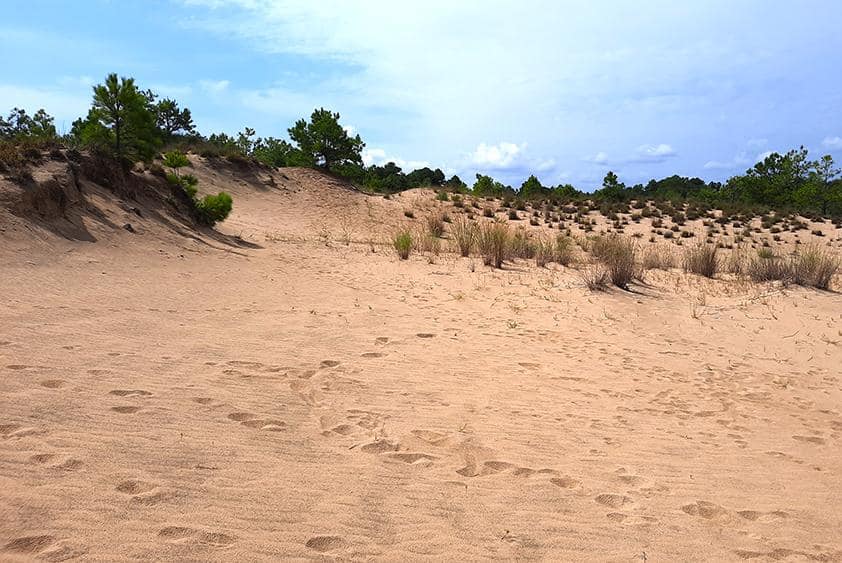
photography by: Omri Westmark
With no marked trails, it is up for you to decide in which direction to hike. The agoraphobia inducing experience could be stressful at start, yet without any off-limit zones, you are free to practically explore every cranny of the park, a privilege not found almost anywhere else.
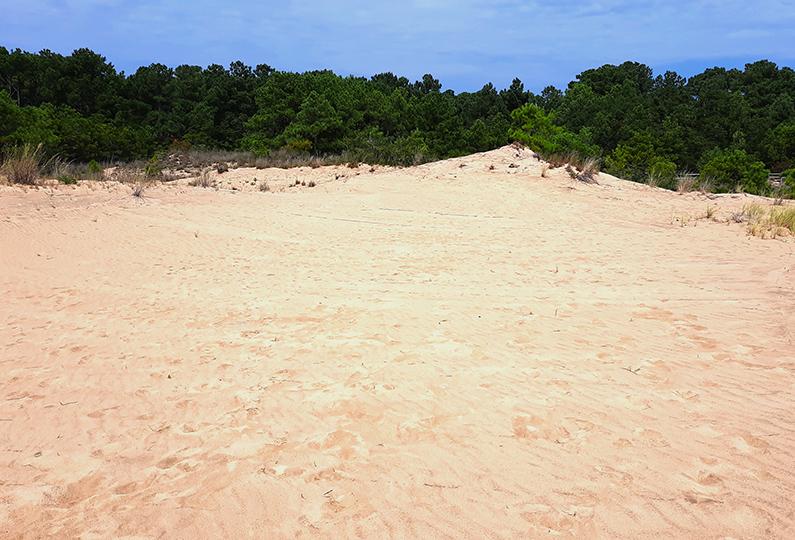
photography by: Omri Westmark
If you expect to find here a desolate landscape dominated by pure empty dunes, upon visit, you’ll be surprised to learn that an ample vegetation covers large swaps of otherwise barren sandy hills.
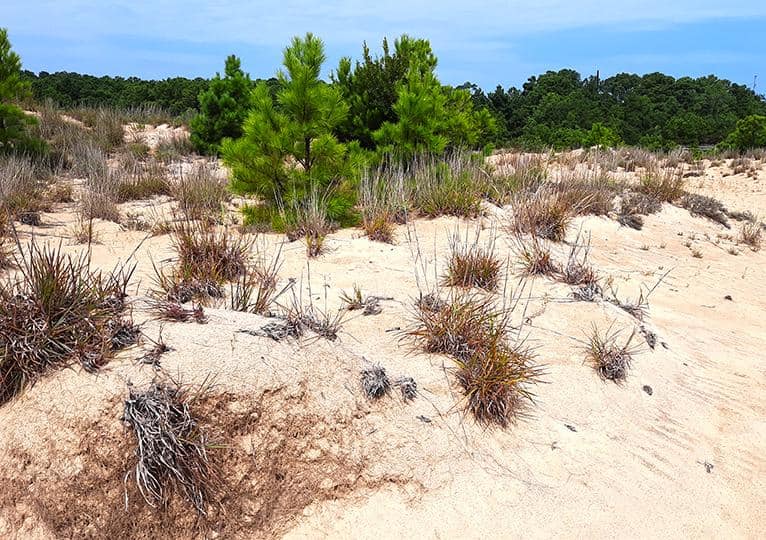
photography by: Omri Westmark
Evidently, almost 460 species of plants call this area home, ranging anywhere from pine trees, trumpet vines to sundew, a carnivorous plant that hunts insects for nutrients.
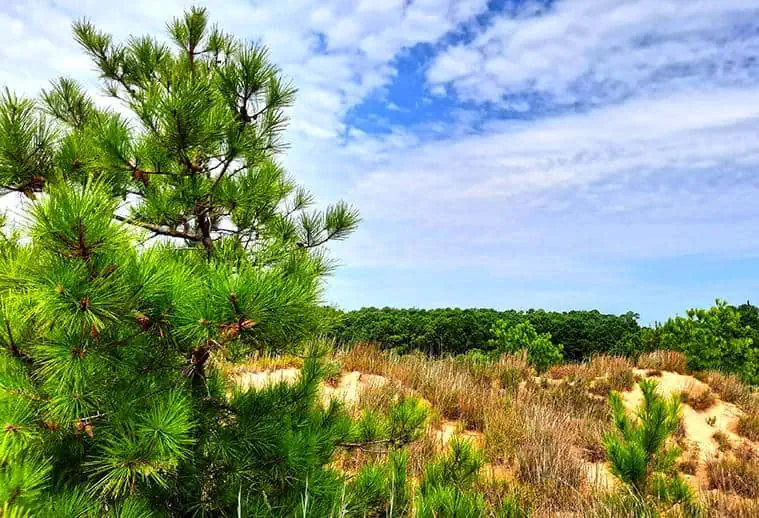
photography by: Omri Westmark
The landscape throughout the natural enclave alternates between bare dunes to dense thicket of pine trees and shrubbery, however, by far the most common type of vegetation form around are grass clumps that firmly clinch to the sand.
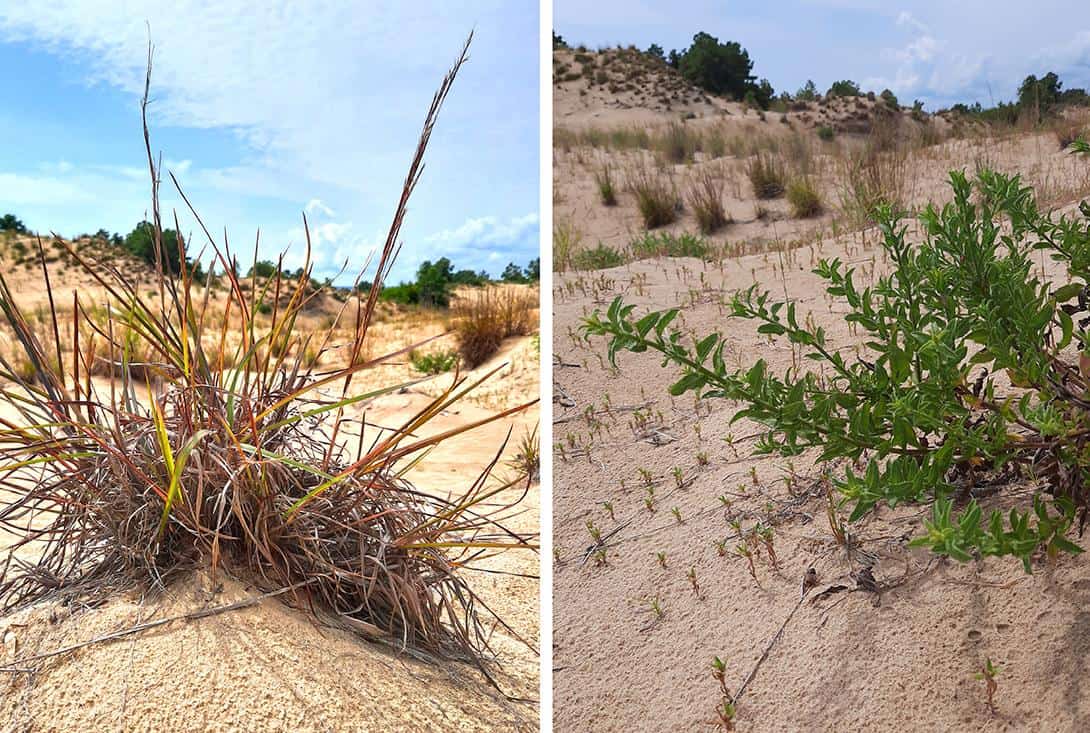
photography by: Omri Westmark
Alongside the reserve’s rich flora are dozens of animal species that either live here all year long or only occasionally frequent the area in search of food or refuge. A whopping 160 different types of birds have been observed in the park, while among its dwellers are also turtles, snakes, opossums, coyotes and even raccoons. If you look carefully enough you might spot some of them, or alternatively find evidence for their former presence, whether it is a simple print in the sand or remains of an eggshell.

photography by: Omri Westmark
With no people around, the fresh footprints are the most conspicuous testimony for their occasional presence.

photography by: Omri Westmark
Excluding the aforementioned shoe-prints, the only man-made object throughout this pristine patch of sandy land is a series of electricity pylons that stretches from south to north.
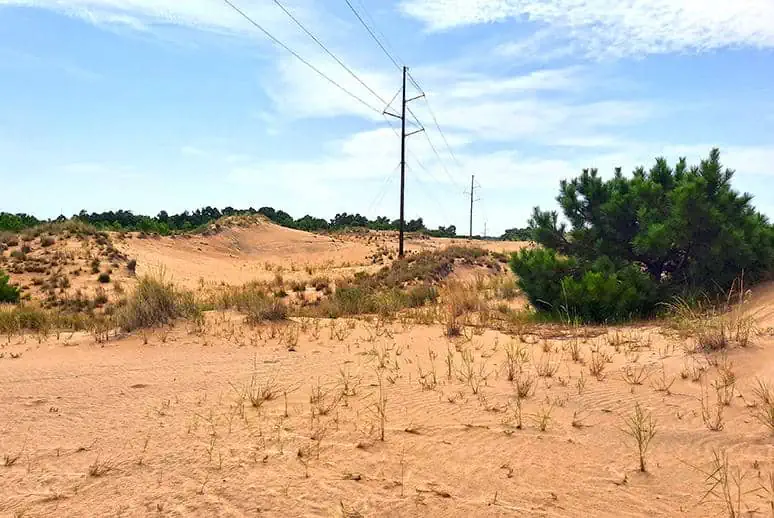
photography by: Omri Westmark
Every now and then, when rain showers frequent the region, freshwater ponds form at the bottom of the dunes, attracting swarms of thirsty birds, mammals and reptiles.

photography by: Omri Westmark
Each and every dune’s hilltop serves a lookout bestowed with stunning panoramic views of the surrounding ocean, while some even offer a distant glimpse of Albemarle Sound, the Wright Brothers National Memorial and the near-by Buzzard Bay, named so after the majestic raptors that hover at the skies above.

photography by: Omri Westmark
The southern part of Run Hill borders Nags Head Woods Preserve, one of the region’s largest extant coastal forests, home to more than 550 species of plants, 150 species of birds and a plethora of mammals and reptiles which all together make this woodland insanely bio-diverse. Theoretically, you can hike in the dense forest directly from Run Hill, albeit the elusive path is tricky to find and so, preferably it is far easier and safer to access the wooded reserve via its official entrance.
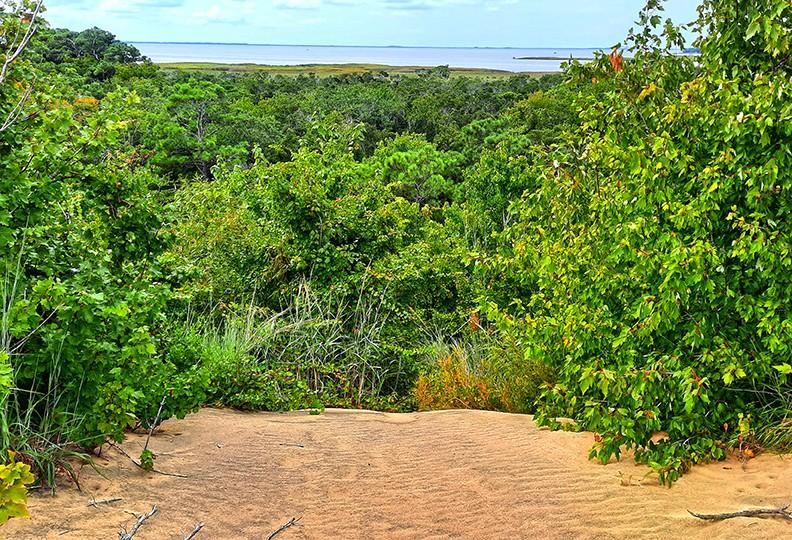
photography by: Omri Westmark
Separating Run Hill from the adjacent bay is a narrow corridor covered entirely by a dense sea of tall reeds, untraversable even for the most intrepid hikers.
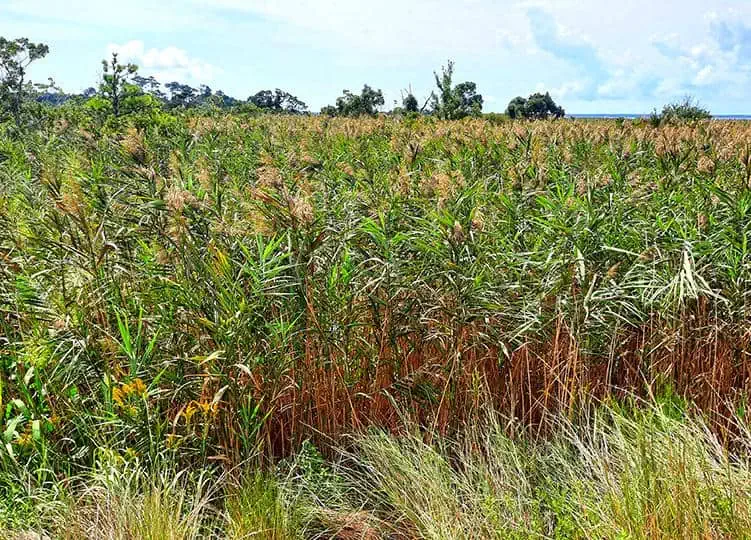
photography by: Omri Westmark
Scattered all over the area, including within the nature reserve itself, are baskets used by the neighboring Casey R. Logan Disc golf, a local amateur frisbee golf club. The oddly shaped structures function as targets, where competing players throw the flying disc at.
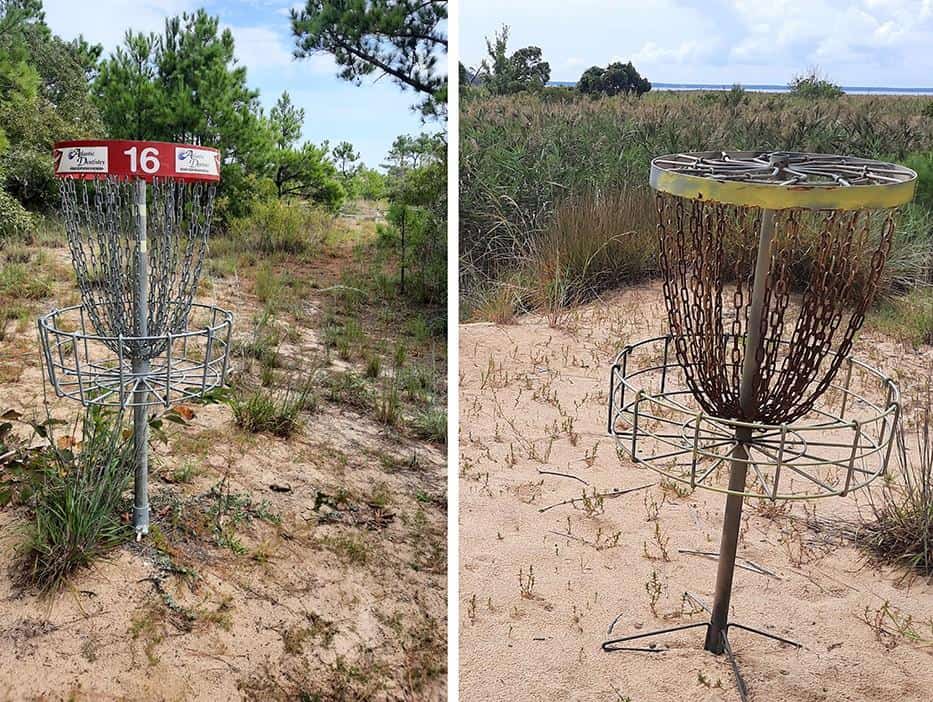
photography by: Omri Westmark